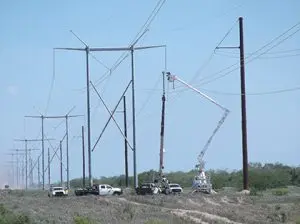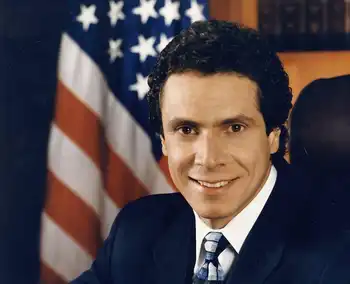Federal investigators probe high power costs
By Berkshire Eagle
CSA Z463 Electrical Maintenance -
Our customized live online or in‑person group training can be delivered to your staff at your location.

- Live Online
- 6 hours Instructor-led
- Group Training Available
Authorities in six northeastern states and several agencies that regulate energy production and distribution recently called for an investigation into the practice, only to find out that FERC has been probing the matter since May.
The alleged practice, known to some as the "Lake Erie Loop Scam," is scheduling power to flow over circuitous routes around Lake Erie a day ahead of its actual transmission. The so-far-unnamed market participants save money by avoiding certain tariffs and fees by scheduling to send the electricity north to Canada and back south again.
They may further profit because electricity will take the path of least resistance and will not actually flow through the path scheduled, causing congestion along other transmission lines and further inflating the cost.
According to an estimate released by the Massachusetts Municipal Wholesale Electric Co., the practice may have resulted in overcharges to consumers amounting to more than $450 million since January.
"This is a New York (State) issue that has some very serious financial consequences for Massachusetts," said David Tuohey, spokesman for Massachusetts Municipal Wholesale Electric Co. "Our bills just for transmission for the month of July went from $1 million to $3 million. That's a big impact for us. But the aggregate cost resulting from this activity is in the hundreds of millions of dollars."
The New York Independent System Operator, which regulates the production and transmission of electricity in New York, had asked the federal agency for expedited rulings on their request to impose new rules and fees to curtail the practice that results in needlessly inflated wholesale prices for electricity.
According to the Federal Energy Regulatory Commission, NYISO's request had been granted.
The rapid rise in the cost of electricity in Berkshire County has been cited in the closing of several paper mills and the withdrawal of a plan to bring a water bottling operation to the former KB Toys distribution warehouse. It has also been identified as a barrier to bringing other new business into the region.
None of the officials contacted could definitively say that Western Massachusetts electricity customers had been impacted.
"We've been trying to calculate the effect to our customers," said Steve Brady, spokesman for National Grid, from his office in Buffalo, N.Y. "We don't believe this had or will have any financial impact on our New England customers. And while we were impacted by the flow congestions, we were not a cause of the flow congestions."
An official from Western Massachusetts Electric Co. who is knowledgeable on the subject was on vacation and could not be reached.
But Massachusetts Municipal Wholesale Electric Co. officials said 40 municipally owned utilities in Massachusetts receive hydro-generated power from the Niagara Hydroelectric Project in western New York. None of them are in Berkshire County. Other states that were seeking an investigation are Connecticut, Rhode Island, Vermont, New Jersey, Pennsylvania and Ohio.
"We're already burdened by too many costs associated with both the production and the delivery of electricity," said Michael Supranowicz, president of the Berkshire Chamber of Commerce. "If someone is doing something that's undermining our ability to get electricity delivered to us in a manner that provides the best value to the end user, they need to be investigated — we need to make sure no one is doing anything underhanded here."
The Massachusetts Municipal Wholesale Electric Co. was one of the entities calling for an investigation "to determine whether the alleged abuse of power market rules warrant a refund to our municipal utility consumers," said Ronald C. DeCurzio, the company's CEO. "The fact that New York's power grid operator did not catch and curtail this activity sooner underscores the need for greater oversight and accountability in restructured power markets, where the cost to consumers is often an afterthought."
"These traders can find what they're calling in this case seams in the rules, I prefer to call them loopholes, where there are opportunities to make some money and they certainly don't hesitate to do that," Tuohey said. "If there was indeed manipulation of the market rules with the knowledge that it would increase prices and these entities would profit from that, it's an abuse of the market rules and warrants some refunding."
The New York ISO became aware of the matter when officials noticed "the congestion was inconsistent with patterns in the past," said Ken Klapp, spokesman for NYISO. "So that was the first flag. But it took months to investigate because you're looking at thousands of bits of information."
"The Federal Energy Regulatory Commission today accepted interim New York Independent System Operator tariff revisions that will help to stem the use of circuitous transmission paths," said Barbara Connors, Federal Energy Regulatory Commission spokesperson, in a statement. "FERC also announced that in May, FERC's Office of Enforcement initiated a non-pubic investigation into power flows in NYISO."
Rep. Daniel E. Bosley, D-North Adams, chairman of the Joint Committee on Economic Development and Emerging Technologies, said the Federal Energy Regulatory Commission was wise to look into the situation.
"Part of the problem is we already have congestion pricing that I'm not really sure is warranted," he said. "And then you have some of these people, it appears, are using unscheduled flow to drive the price up even more and maximize money going to them. You would hope people wouldn't do that."
"The commission does have enforcement authority and civil penalty authority," Connors added. "We haven't quite gotten to that point yet because we're still looking into it."











